How Can I Get My Team More Engaged in Training?
Last Updated on January 22, 2025 / Training & Development

HR Question:
Retaining our top talent has become a huge concern at our organization. In a recent survey, our employees said they don’t feel like they have opportunities for training. We’ve offered training but get pushback from employees who don’t want to go. There’s clearly a disconnect between what our employees want and what we’re offering. How can I get my team more engaged in training?
HR Answer:
You’re right – it does sound like there’s a disconnect here! And it’s no secret that training and development offerings are one of the key tools that employers can use today to retain the talent they already have. Per Forbes, 70 percent of employees would leave their current employer for another organization that has a reputation of developing and training their people.
But don’t worry. The good news is there are ways to find that middle ground between what your employees want to know and what you, as the employer, need them to know.
First, Complete a Training Needs Analysis
A training needs analysis can be a good place to start. Is the training you are offering meeting the needs of the organization? This analysis can be both based on the internal needs of the organization, asking questions such as:
- What skills are team members missing?
- What software or hardware do they need to know?
- Are there industry standards that need to be met?
And based on the soft skill and development needs of your employees, questions can look like:
- What soft skills do employees need to have to grow professionally in the long-term?
- Are there skills that they’d like to learn in order to be eligible for promotions or growth?
If you’re able to clearly outline the why behind the training, you’re more likely to see engagement (and maybe even excitement) when it comes to learning new information and skills. Additionally, should the team have input into what topics are covered, you’re more likely to get a team who actively participates in training sessions rather than running away from it.
Carve Out the Time
Whether it’s learning a new skill that will make their current job easier, or learning a topic that will help them achieve their long-term goals, it is essential to gain the employee’s buy-in to step away from their job for the duration of the training. When possible, offer some assistance in covering their workload so they can best focus on the training session, instead of being distracted by the work accumulating while they’re away.
For example, consider asking other team members to cover extra shifts with overtime, or providing a dedicated time period where everyone is engaged with training rather than being on the floor. Alternatively, if you work in a professional or consulting organization, it could involve making adjustments to billable expectations so team members aren’t penalized for their time away.
Create Interactive & Engaging Programs
Research has shown that learning through multimodal concepts allow the individual to engage their brains in different ways, making it more likely the concepts will be retained and applied. Whether creating a training program yourself or working with an outside vendor, we recommend utilizing a variety of avenues such as:
- Videos
- Role Playing
- Mobile Apps
- Scavenger Hunts
- One-on-One Discussions
This variety increases the likelihood the program takes into account individual learning styles and in turn, will be more likely to be remembered. Minimizing extensive time of pure lecture is the key to effective training.
Empower Your Team to Contribute
If building or contracting out training feels daunting, whether that’s due to time or finances, don’t forget the fantastic talent and resources that you have at your fingertips – your team!
Generational studies have shown that older generations, such as baby boomers and Gen X’ers, are eager to find opportunities to share their knowledge with younger generations to prevent recreating the wheel. Consider empowering all generations of your team by creating programs such as internal mentoring programs, where lessons and teachings can go both up and down the ladder.
Encourage your team to share their specialized knowledge through “Lunch n’ Learns” or learning breakfasts. This can highlight and leverage team members’ knowledge and skills with the potential to increase future collaboration as well.
Whether done internally or through an outside vendor, training your team means making an investment. Make sure the training is adding value to both the employees and the organization. Whether it’s learning a new skill that will make their current job easier or a topic that will help them achieve their long-term goals, it is essential to gain the employee’s buy-in and to offer the necessary support so the training doesn’t feel like an undue burden.
Thank you to Cathleen Snyder, SPHR, SHRM-SCP, Director of Training & Development, Melinda Canino, and Samantha Kelly for contributing to this HR Question of the Week.
Are you overwhelmed trying to meet the various training needs of your organization (i.e., workplace harassment, DEIB, Leadership and Management, and more)? Don’t worry! Clark Schaefer Strategic HR can help you by delivering customized and engaging training to achieve your desired results, and we can lead both in-person and virtual training. For more information, visit Training & Development, or simply contact us.



